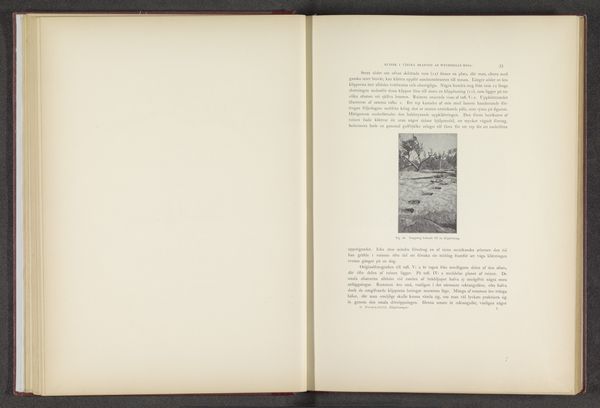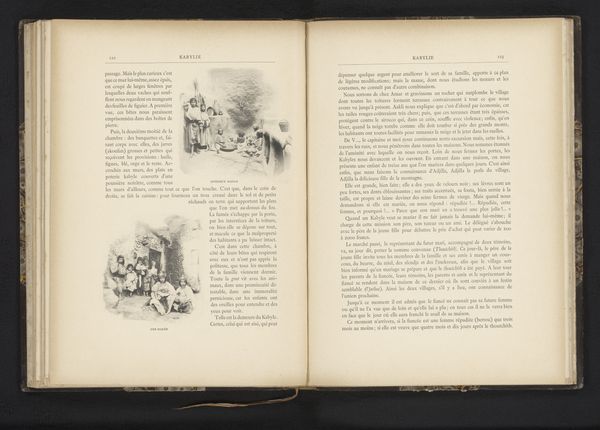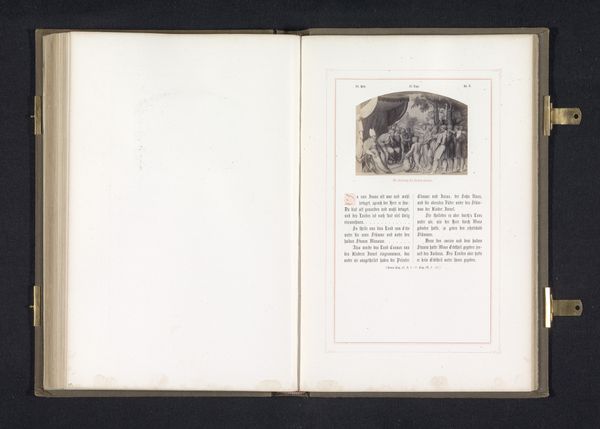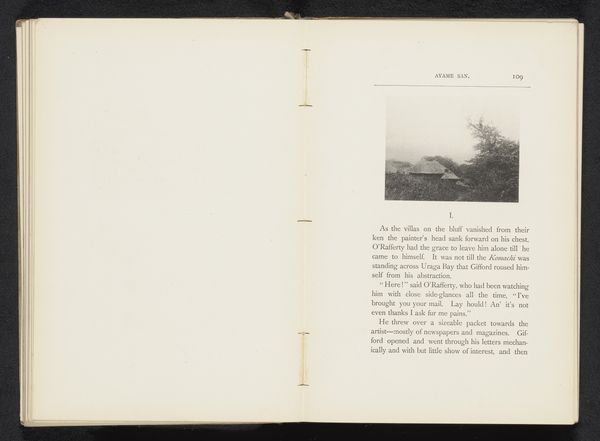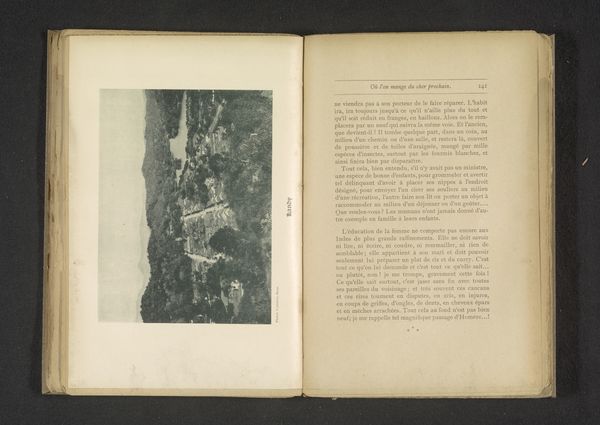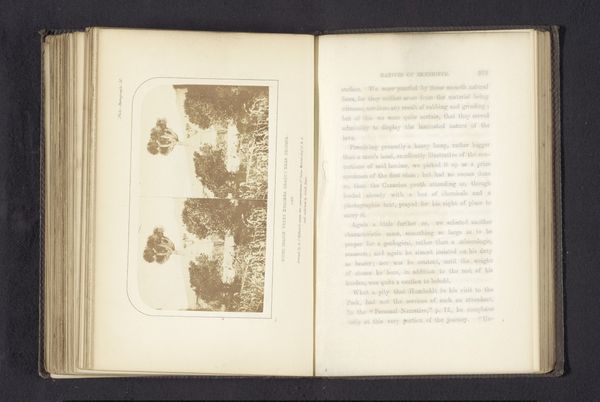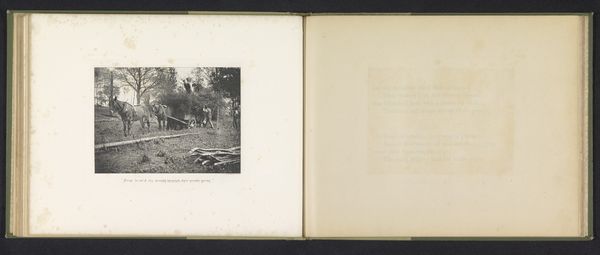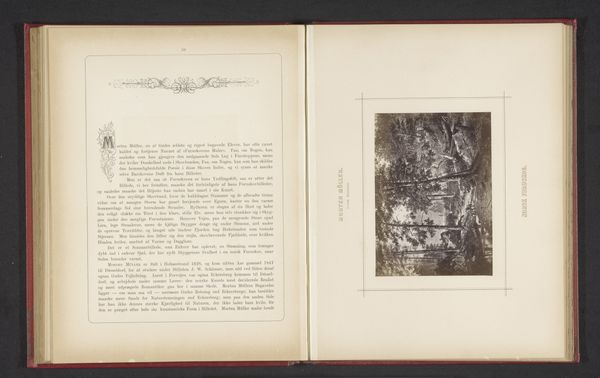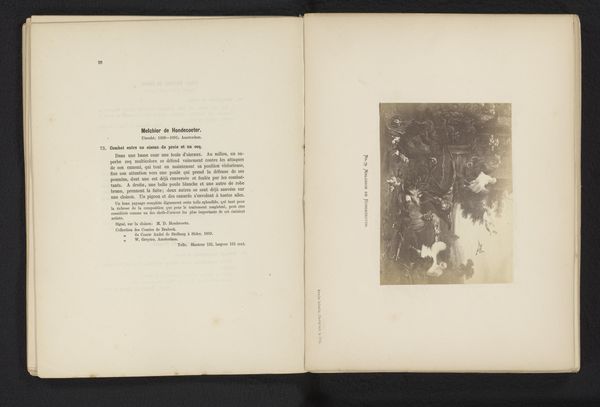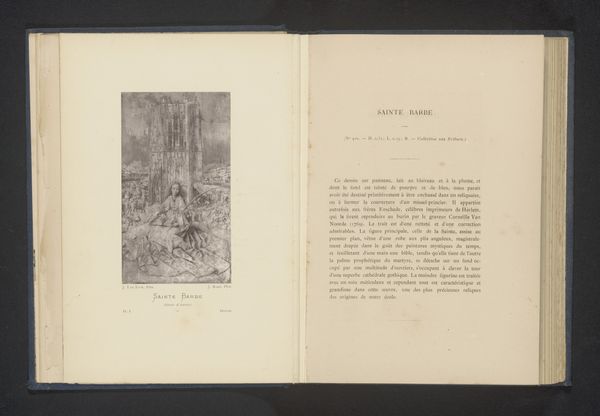
Vrouw en een kind zitten op een muurtje in El Boulaïda, Algerije before 1893
0:00
0:00
julesgervaiscourtellemont
Rijksmuseum
print, photography, albumen-print
#
aged paper
#
homemade paper
#
paperlike
# print
#
sketch book
#
landscape
#
photography
#
personal sketchbook
#
child
#
hand-drawn typeface
#
orientalism
#
thick font
#
handwritten font
#
albumen-print
#
historical font
#
small font
Dimensions: height 101 mm, width 146 mm
Copyright: Rijks Museum: Open Domain
Curator: Here we have an intriguing albumen print from before 1893, by Jules Gervais-Courtellemont, titled "Vrouw en een kind zitten op een muurtje in El Boulaïda, Algerije"—"Woman and child seated on a low wall in El Boulaïda, Algeria." It's housed here at the Rijksmuseum. Editor: My first impression is one of stillness, a muted and dreamlike stillness. The albumen print has softened all the forms. The light is diffuse. And despite the presence of figures, it feels quite solitary. Curator: Indeed. Courtellemont was deeply involved in creating photographic albums, many of which sought to document life in North Africa during a period of intense colonial interest and expansion. So, in considering stillness, might we also explore the socio-political circumstances under which such quietude was manufactured, or perhaps merely observed? Editor: It's the tonality that grabs me first. The limited range creates this incredible texture and an almost palpable atmosphere. Look how the subtle gradations around the figures bring them forward—it's the light that is almost the main subject here. Curator: Precisely. This form of image making provided the colonial gaze an opportunity to portray people of color and their spaces. It becomes this ethnographic cataloging; what do you make of how that intention impacts the composition for you? Editor: What I see instead are simply forms bathed in light. One can decode so much based solely on the composition—the positioning of the figures, the contrast between light and shadow and overall balance create what stands as an ode to simpler times—captured so vividly that it is beyond reproach regardless of intent. Curator: Your point raises important considerations. As contemporary viewers, how do we balance our understanding of an artwork’s inherent formal qualities, with our awareness of the historical power dynamics present during its creation? Editor: It strikes me that the beauty remains irrespective of its circumstances. Thank you. Curator: Food for thought indeed. A complex beauty reflecting power dynamics.
Comments
No comments
Be the first to comment and join the conversation on the ultimate creative platform.
